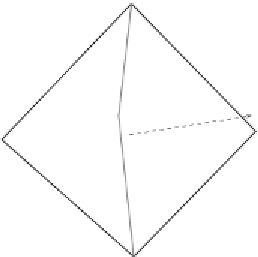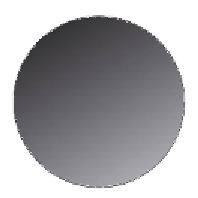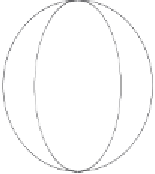Global Positioning System Reference
In-Depth Information
approximate a sphere. An exotic example of this idea has found practical
application in the construction of soccer balls: figure 4.11 shows a
trun-
cated icosahedron
, which is made up of 12 pentagons and 20 hexagons, next
to a soccer ball.
From what we have learned about projections and polyhedra, it seems
reasonable to conclude that we can construct a map by projecting from the
center of the earth onto one or another type of polyhedron. We can ex-
pect fairly small distortions from such a gnomonic projection, particu-
larly if the polyhedron consists of many component polygons and ap-
proximates the shape of a sphere. Having made the projection, we then
unfold the polyhedron to form a flat map. Such a
Dymaxion map
, as these
FIGURE 4.10.
Polyhedra and Dymaxion projections. In these projections, a poly-
hedron, rather than a cylinder or a cone, is wrapped around the globe. (a) An
octahedron, with eight triangular faces tangential to the sphere. A gnomonic
projection is illustrated. (b) The octahedron can be unfolded and laid flat in this way.
(c) A dodecahedron, consisting of twelve pentagons, more closely resembles a
sphere. (d) This is how the dodecahedron unfolds.



































